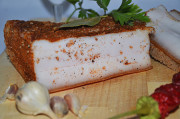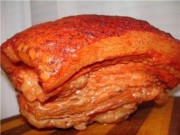How to salt lard in Ukrainian for the winter
Salo has long been the hallmark of Ukraine. Ukraine is big, and there are many recipes for salting lard. Each region, each village has its own recipes, and they are all incredibly good.
Previously, lard was salted for the winter as needed. In the fall, pigs were slaughtered so that before Christmas they would not bother themselves with extra work and would have traditional meat dishes on the table. There were no refrigerators, and salt had to be used to preserve food. Salt was also quite expensive, but housewives got out of the situation and came up with their own recipes for salting lard.
Depending on the quality of the lard, a specific recipe is chosen for salting it. Lard from a young pig can be salted with dry salting. Ideally, such lard has meaty streaks and a thin skin, which, after salting, will become simply incomparable.
How to salt lard with dry salting
Under no circumstances should you wash lard. Even if it’s lard from the market or store, and you notice some crumbs or sawdust stuck on it. Arm yourself with a knife and scrape the lard from all sides, removing what has stuck to it on the way to your kitchen.
Cut the lard into small strips, about 5 cm wide, and as long as you have. Dry salting implies the presence of a container in which the lard will be stored. In the old days they used wooden boxes for this, but now it is a luxury and you have to use what you have.To salt lard, you can use three-liter jars, enamel pans, or plastic containers.
Place a layer of coarse rock salt on the bottom of the pan. This salt will absorb the water that comes out of the lard.
Place a piece of lard on this layer of salt, skin side down, and sprinkle it with a mixture of salt, paprika, and cloves of garlic. You can use black pepper, but it gives practically nothing, and paprika goes better with lard.
Lay the lard in layers, and do not skimp, sprinkle them with salt. The lard will not be over-salted, but will take only what it needs. In this case, salt is needed to absorb moisture.
When you have laid all the lard, it needs to be transferred to a cool place. To do this, it is better to use a cellar where the temperature is consistently cool. Cover the container with lard with a lid, but do not seal it tightly. Lard must “breathe”, otherwise it will go rotten, even with so much salt.
Lard can be stored in this form for several months, but you can try it within a week. Pull out a piece of lard, scrape off the excess salt with a knife, and try it, which is what lard lovers go crazy for.
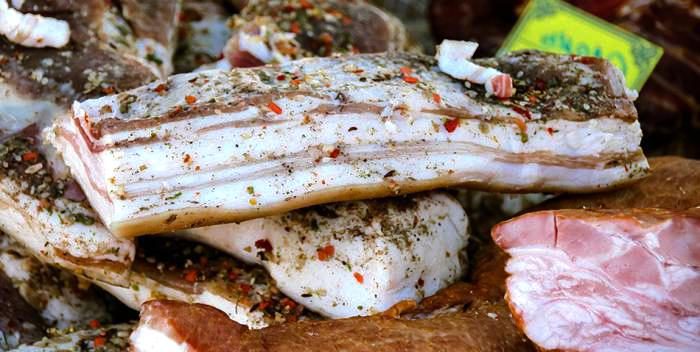
Boiled salted lard
The lard from an old pig, or from a boar, is quite thick, dense, and often does not smell very pleasant. If you become the owner of such a piece of lard, you can save it if you cook it correctly.
Cut the lard into cubes measuring 10 by 10 cm (approximately).
Wash a handful of onion peels and place them on the bottom of the pan.
Place the lard directly on the “cushion” of husks and add water until it completely covers the lard.
Add salt, at the rate of 3 tablespoons, for every kilogram of lard, and put the pan on the fire.
After boiling, turn the heat down and cook the lard for 2 hours.After this time has elapsed, throw a dozen black peppercorns, three bay leaves, and garlic into the pan and cover the pan with a lid until the brine cools completely.
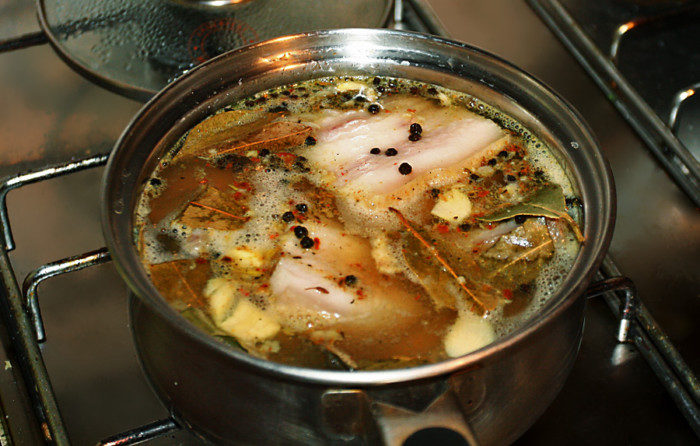
When the brine has cooled, remove the lard and place it on a wire rack to drain. It's too early to try it yet. Wrap the lard in cling film and place in the refrigerator for 4-5 hours. With this method of preparation, foreign odors disappear, and the lard takes on the appearance and taste of smoked lard.
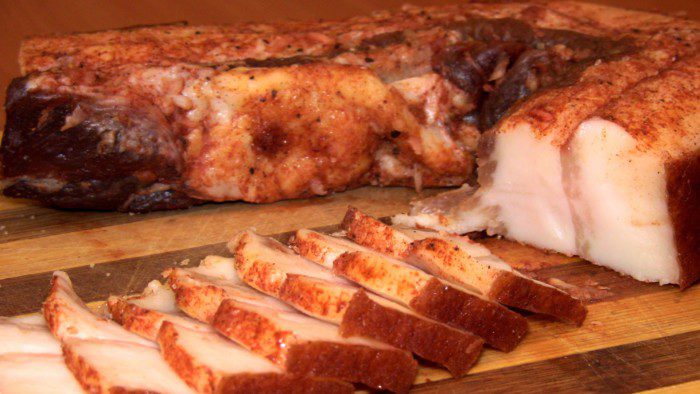
The rest of the lard can be put into bottles, filled with the brine in which it was boiled, and covered with plastic lids. Lard in this form can be stored in the refrigerator, but not more than one month.
There are many options for preparing lard. Many people experiment with seasonings, but the perfect is the enemy of the good. Use time-tested spices, because you can always add them after salting, just before eating.
Watch the video for another recipe on how to salt lard for the winter:






